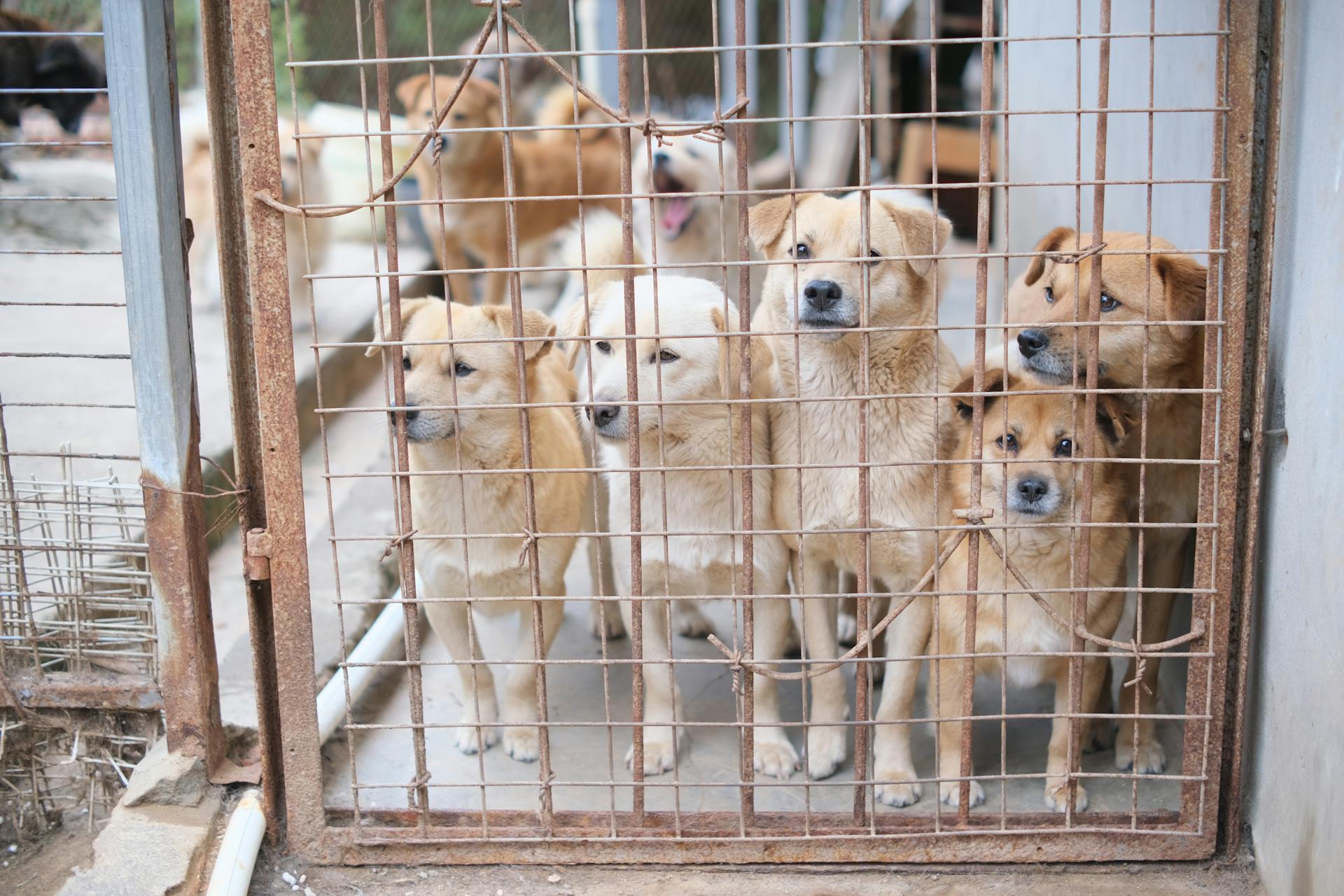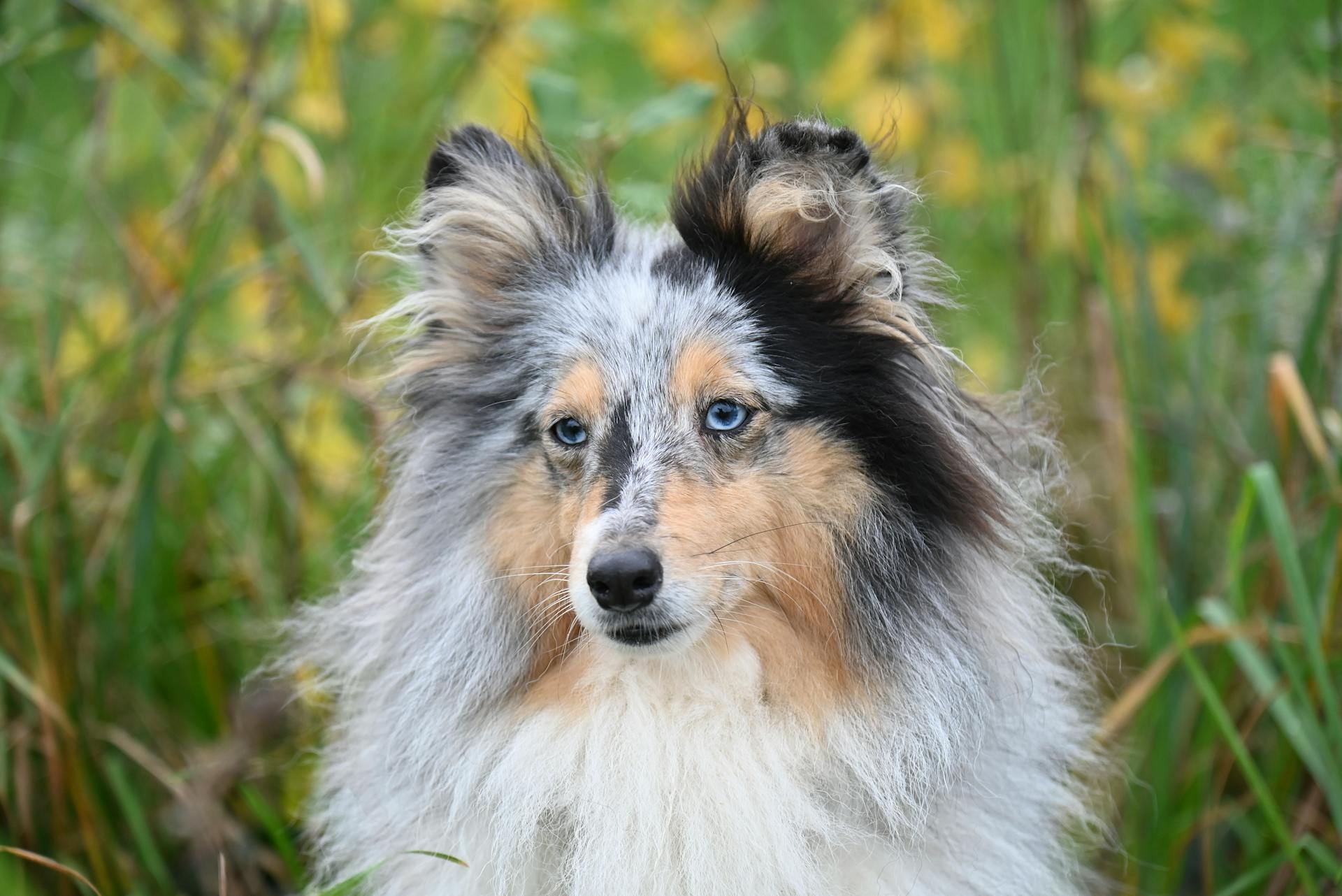
The Catalan Sheepdog is a rare breed that originated in the Pyrenees region between France and Spain. This breed has a thick double coat that sheds heavily, making it a great companion for those who enjoy outdoor activities.
Their ancestors were herding dogs that worked alongside shepherds to manage flocks of sheep. They were valued for their intelligence, agility, and protective nature.
The Catalan Sheepdog is a medium-sized dog with a muscular build and a wedge-shaped head. They typically weigh between 45-65 pounds and stand between 20-24 inches tall.
Breed Characteristics
The Catalan Sheepdog is a remarkable breed with a rich history and unique characteristics. They are known for their intelligence, loyalty, and hardworking nature, making them a standout breed among herding dogs.
Their intelligence is one of their most notable traits, and they thrive on having tasks to perform. They are natural workers with sharp minds and need regular mental stimulation and challenges to keep them engaged and happy. This is why they excel as herding dogs and are highly trainable.
Here are some key characteristics of the Catalan Sheepdog:
- Very intelligent and versatile
- Very active, needs plenty to do physically and mentally
- Great as a working dog or a companion
- Good with children and other pets when socialized properly
- Vocal breed, particularly when alerting and guarding
History and Origins
The Catalan Sheepdog's history is a fascinating one, with theories suggesting it descended from ancient Pyrenean dogs brought to the Iberian Peninsula by Roman armies.
Unfortunately, the breed's history is not well-documented, and the exact origins are somewhat obscure. However, it's believed that the breed's ancestors were used for herding and guarding livestock in the region.
The Catalan Sheepdog's versatility and amiable personality made it a constant presence in Catalonia, working alongside sheep farmers from the Middle Ages onward.
During times of war, the breed was trained as a messenger dog, serving in the Spanish Civil War and World War II. Its courage and loyalty were invaluable assets in these situations.
Despite its importance, the breed's numbers dwindled in the 1960s due to a changing agricultural landscape, leaving it on the brink of extinction by the 1970s.
A group of enthusiasts came together to purchase remaining dogs and establish a breeding program, which has slowly increased the breed's numbers, although it remains extremely rare outside of its native Catalonia and Spain.
In 2009, the Kennel Club granted the breed full recognition, and since then, the number of new entrants has been in the double digits, indicating a gradual but steady growth in popularity.
Curious to learn more? Check out: Mabari War Hound
Traits
The Catalan Sheepdog is an intelligent and versatile breed, known for its herding abilities and strong work ethic. They are highly intelligent and thrive on having tasks to perform, making them natural workers with sharp minds.
One of the key characteristics of the Catalan Sheepdog is its adaptability. They can thrive in a variety of environments, from warm to cold climates, and are suited to temperate or harsh conditions. Their coat protects them from both heat and cold.
These dogs are also highly loyal and dedicated, excelling as herding dogs and vigilant guardians of their livestock and family. They have a keen sense of responsibility and protective instincts, making them excellent watchdogs.
In terms of physical characteristics, the Catalan Sheepdog has a distinctive appearance, with adorable beards, mustaches, and tufted eyebrows. They also have wide, expressive eyes and a long, low, furry tail, although some individuals may be naturally tailless.
Here are some key traits of the Catalan Sheepdog:
As a vocal breed, the Catalan Sheepdog uses a variety of sounds to communicate with its humans and alert them to unusual activity. They are known for their expressive nature and natural watchdog abilities.
Appearance and Grooming
The Catalan Sheepdog's appearance is truly unique and endearing. They have a medium-sized build with a strong head, dark amber eyes, and a broad, slightly domed head with a straight muzzle.
Their coat is a key part of their appearance, and it's quite impressive. It's a double coat, with the undercoat being particularly thick on the back half of their body.
One of the most distinctive features of the Catalan Sheepdog's coat is its shedding pattern. Unlike most breeds, they shed their coat in two stages: first, the front half of their body, and then the back half. This can give them a slightly odd appearance for a time during the shedding process.
Broaden your view: Bull Terrier Head Shape
Here's a summary of the breed's typical coat colors:
- Fawn
- Sable, White and Black
- Grey and White
- Grey and Black
- Black and Tan
To keep their coat looking its best, regular grooming is a must. Brushing their coat a few times a week will help prevent mats and tangles, and daily brushing during shedding season will help keep the hair under control.
For more insights, see: Will Shiba Inu Hit $1
General Appearance
The Catalan Sheepdog is a medium-sized breed with a well-proportioned, hardy, and muscular build. They typically stand between 45 to 55 cm (17.5 – 21 in) tall, with males being slightly taller than females.
Their broad, slightly domed head has a strong, straight muzzle, and their dark eyes are set well apart, giving them an intelligent and alert expression. The breed's coat is long, rough, and wavy, with a thick undercoat that's especially well-developed on the back half of the body.
The Catalan Sheepdog's height ranges from 45 to 55 cm (17.5 – 21 in), with males typically being taller than females. Here's a breakdown of the breed's ideal height and weight:
Their expressive eyes are round and dark amber in color, and their triangular ears are set fairly high on the head, covered in long fringes of hair. The breed's low-set tail is remarkably variable, being absent in some dogs, and long and curled in others.
For another approach, see: Dogs Breeds That Start with B
Weight

Maintaining a healthy weight is crucial for overall well-being, and it's closely tied to our body shape and size.
Aiming for a BMI between 18.5 and 24.9 is generally considered ideal, as it reduces the risk of chronic diseases like diabetes and heart disease.
The ideal weight for an individual depends on their height, muscle mass, and bone density.
For example, a person who is 5'9" (175 cm) and has a muscular build may weigh around 154 pounds (69.8 kg), while someone of the same height with a lower muscle mass may weigh around 130 pounds (58.9 kg).
Regular exercise and a balanced diet are key to achieving and maintaining a healthy weight, and it's essential to set realistic goals and celebrate small victories along the way.
Aiming to lose 1-2 pounds (0.5-1 kg) per week is a safe and sustainable goal, as it allows for a gradual reduction in body fat while preserving muscle mass.
By focusing on progress, not perfection, we can develop a healthier relationship with food and exercise and achieve a weight that makes us feel confident and comfortable in our own skin.
For more insights, see: Will Shiba Inu Reach 1 Cent
Care and Maintenance
To keep your Catalan Sheepdog happy and healthy, it's essential to provide regular exercise. A daily walk of at least 30 minutes is recommended to keep them active and engaged.
Catalan Sheepdogs are reasonably active family pets, so they'll thrive in a household with a yard or regular outdoor activities. They're not high-maintenance dogs, but they do need some physical and mental stimulation.
Their original purpose as working dogs has given way to a life of leisure, but they still require regular grooming to look their best.
On a similar theme: Catalan Sheepdog Puppies
Care Guide
To keep your Catalan Sheepdog happy and healthy, daily exercise is a must. They need moderate to high levels of exercise every day.
The ideal exercise for a Catalan is activities that provide a use for their strong instincts, like herding work, cani-cross, treibball, and agility work.
This breed is not suitable for people who aren't active, as they require regular physical activity to stay satisfied.
Catalan Sheepdogs are reasonably active family pets, so they'll thrive in a household with a busy lifestyle.
They might have been bred for work, but these days they're just as happy to be part of a loving family.
Recommended read: How Much Exercise Do Border Collies Need
Known Health Issues
The Catalan Sheepdog is generally a healthy breed, but like all breeds, they can be prone to certain health issues.
Hip dysplasia is a genetic condition that occurs when the hip joint doesn’t fit together perfectly, which can lead to arthritis or lameness.
To manage hip dysplasia, it's essential to maintain a healthy weight through a balanced diet and regular exercise, as well as to avoid high-impact activities that can exacerbate the condition.
Regular veterinary check-ups can also help identify any potential issues early on.
Hip dysplasia can be managed with lifestyle modifications, anti-inflammatory medications, and in severe cases, surgery may be necessary.
Progressive Retinal Atrophy (PRA) is an inherited condition where the retina degenerates, leading to vision loss and eventual blindness.
PRA is a serious condition that requires supportive care and adaptations to the dog’s living environment to help manage the condition.
Glaucoma involves increased pressure in the eye, which can cause pain and lead to blindness if untreated.
Check this out: Lead Dog Citra Solo
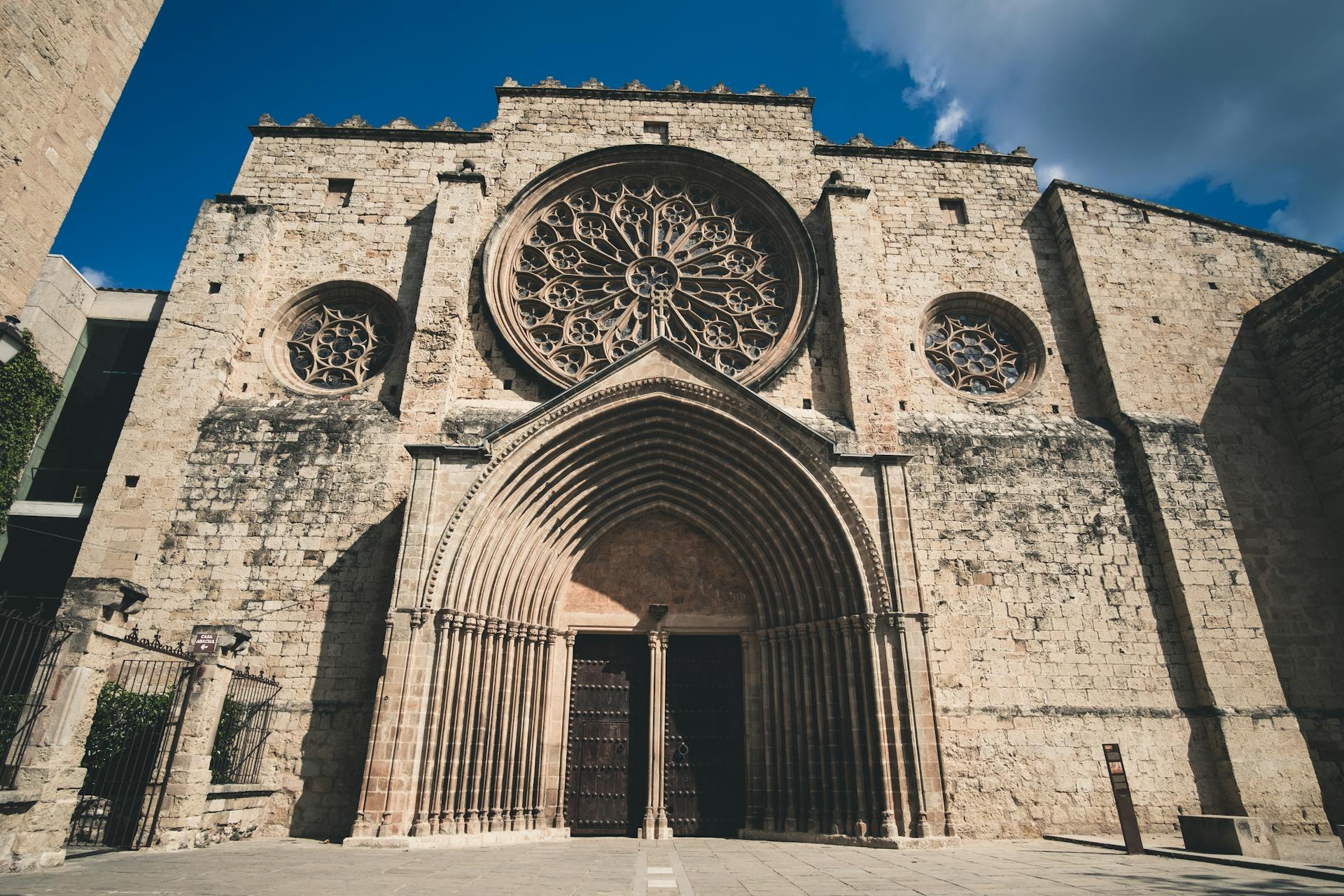
Glaucoma can be treated with medications to reduce eye pressure, and in severe cases, surgery to relieve pressure.
Epilepsy is a neurological disorder that causes seizures, and it's essential to work closely with a veterinarian to develop a treatment plan.
Epilepsy can be managed with anti-seizure medications and regular veterinary check-ups to monitor the condition.
Dental issues such as gum disease and tooth decay are common in Catalan Sheepdogs.
Regular dental care, including brushing and professional cleanings, is crucial to prevent dental issues.
A simple dental care routine can go a long way in maintaining your Catalan Sheepdog's overall health and well-being.
Here's a quick rundown of the common health issues that may affect your Catalan Sheepdog:
- Hip dysplasia: a genetic condition that can lead to arthritis or lameness
- Progressive Retinal Atrophy (PRA): an inherited condition that can lead to vision loss and blindness
- Glaucoma: increased pressure in the eye that can cause pain and blindness
- Epilepsy: a neurological disorder that causes seizures
- Dental issues: gum disease and tooth decay
Family and Socialization
Catalan Sheepdogs are known for their loyalty and deeply affectionate nature, forming strong bonds with their family members and being particularly gentle and protective around children.
They naturally take to children to protect them, but as a herding breed, they also tend to try to herd anything and everything they can, which can cause some issues. They need a consistent routine and benefit from firm yet positive training methods to manage their herding instincts.
Early and consistent socialization training is vital to ensure that these dogs learn to manage their herding instincts appropriately around children and other pets. This lifelong task should persist to keep them well behaved and happy.
For more insights, see: Best All around Dog Breed
Family Compatibility
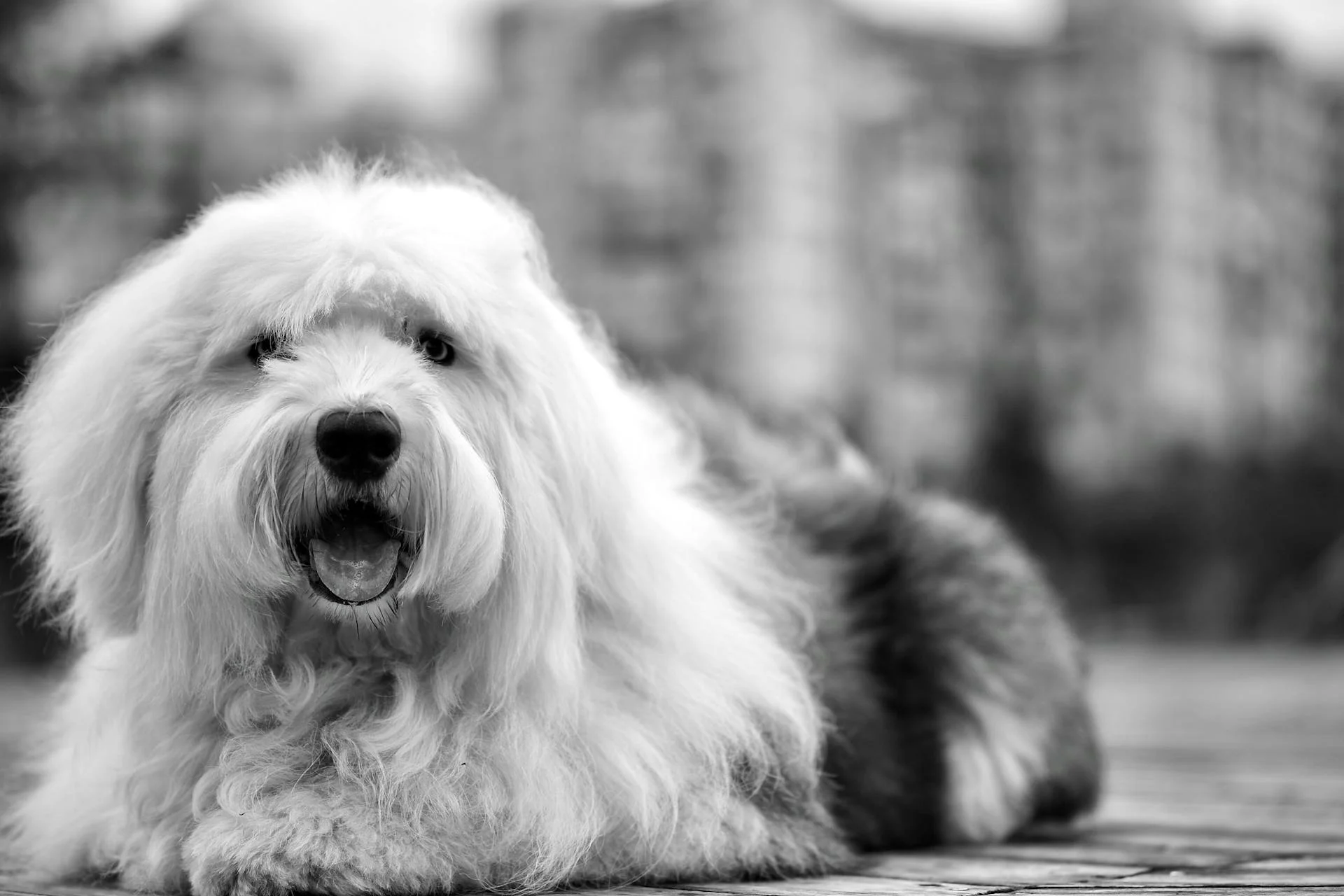
Catalan Sheepdogs are naturally protective of their family members, particularly children, and form strong bonds with them.
They are generally gentle and affectionate, but can become destructive if they don't receive enough attention and play.
These dogs are extremely energetic and their minds are always working, which means they need a consistent routine and regular exercise to stay happy and healthy.
With proper training and socialization, they can learn to manage their herding instincts and be great companions for families.
However, they do require ongoing socialization to prevent overprotectiveness and ensure they get along with others.
Catalan Sheepdogs are best suited for homes with a secure yard where they can run and play, as they need regular, vigorous exercise to thrive.
Early and consistent socialization training is vital to ensure they learn to manage their herding instincts around children and other pets.
Their problem-solving abilities and quick learning make them excellent candidates for activities like herding trials, agility training, and interactive play.
Discover more: Do Border Collies Need to Be Groomed
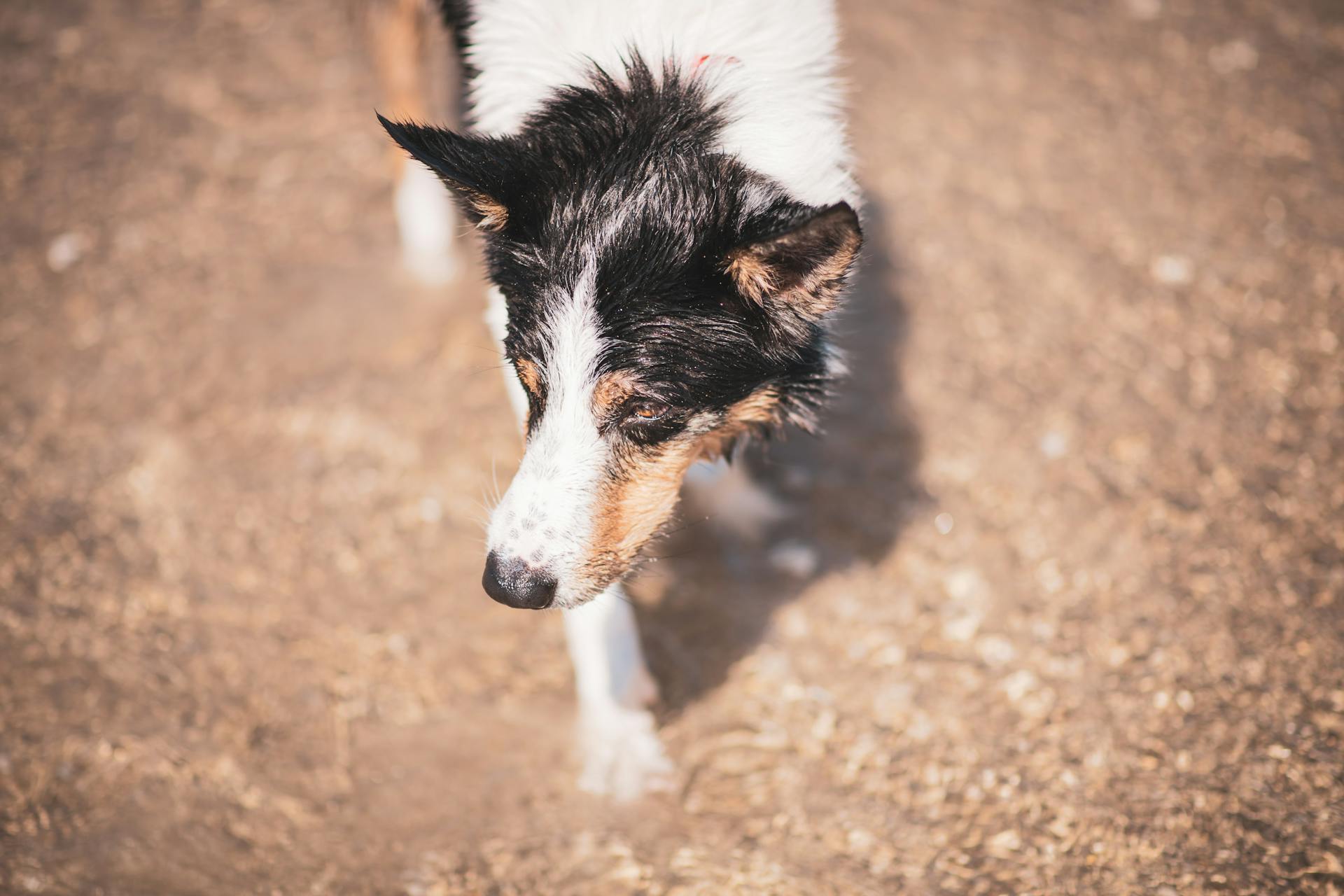
Incorporating puzzle toys, scent work, and advanced training exercises into their routine can keep their minds sharp and prevent boredom.
Their high energy levels and herding instincts mean they're not ideal for apartment living or city environments.
With proper care and attention, Catalan Sheepdogs can be wonderful family pets and loving companions.
Puppies
Catalan Sheepdog puppies are natural herders, often showing herding behaviors while still very young.
Litters typically range from three to six pups, with an average of four. It's essential for these little herders to stay with their mother and littermates for at least eight weeks before moving on to their new home.
Early socialization and consistent training are crucial for these puppies. This will help them develop essential social behaviors and a strong foundation for future training.
In the United States, you can expect to pay between $1200 to $2500 for a good pedigree pup. In Europe, prices range from €800 to €1,500, with Spain being the cheapest option.
The rarity of the Catalan Sheepdog means that you may have to wait for an available pup, and registering your interest with a breeder is often necessary.
Group
The group your dog belongs to can be a big clue in understanding their behavior and needs.
Some breeds, like the Catalan Sheepdog, are part of the Herding group.
Herding breeds are often highly social and energetic, requiring regular exercise and mental stimulation.
If you're interested in learning more about your dog's group or breed, you can check out Wisdom Panel's DNA tests.
Frequently Asked Questions
Are Catalan Sheepdogs rare?
Yes, the Catalan Sheepdog is a rare breed, but thanks to dedicated breeders, its population is slowly growing. This growth is attributed to the breed's natural ability to care for and drive flocks.
Do Catalan Sheepdogs moult?
Yes, Catalan Sheepdogs moult, but they do it in a unique way, shedding hair on the front half of their bodies before moving on to the back half. This process is a normal part of their coat maintenance.
What is similar to a Catalan Sheepdog?
The Catalan Sheepdog shares roots with breeds like the Briard, Picardy Sheepdog, Pyrenean Sheepdog, and Beauceron. These breeds also originated for herding and guarding sheep in European regions.
Featured Images: pexels.com
